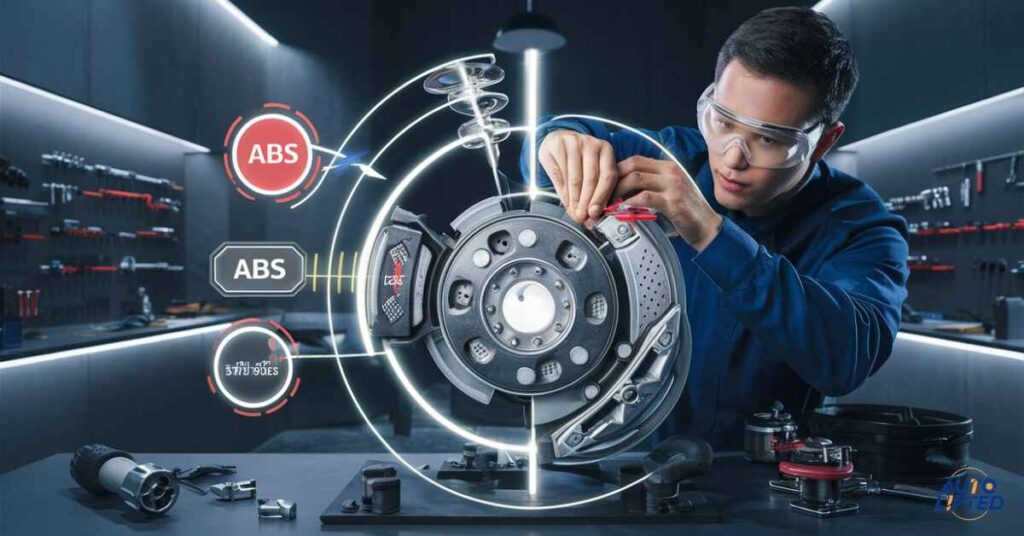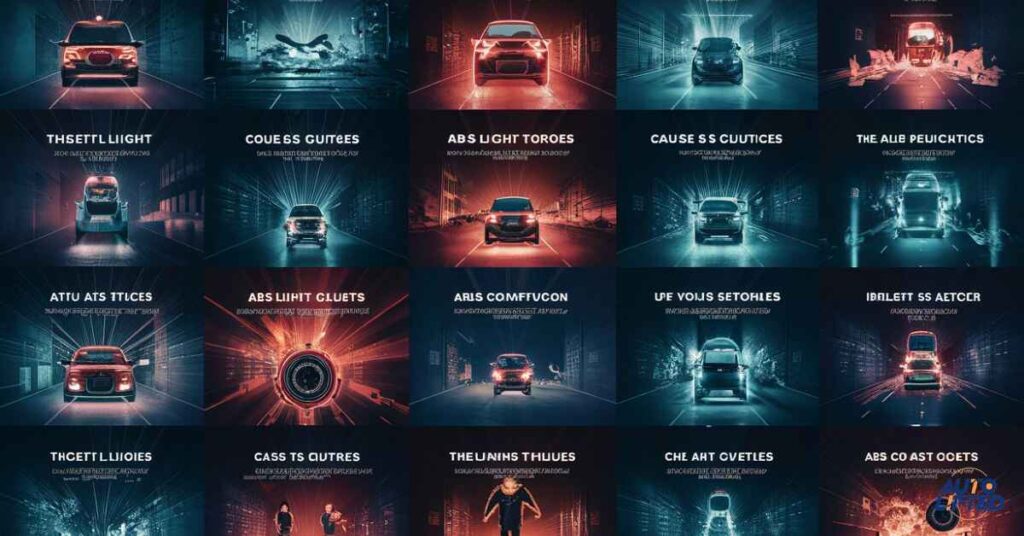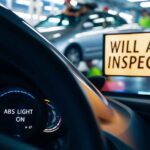You are driving along, everything seems fine, until that dreaded ABS light illuminates on your dashboard. Panic sets in, what does this mean for your upcoming vehicle inspection? The anti-lock braking system (ABS) is a crucial safety feature in modern vehicles.
When that warning light glows, it could indicate a malfunction that might cause your car to fail inspection. But don’t worry, we have got you covered. In this comprehensive guide, we will explore the ins and outs of ABS lights, inspection regulations. You can do to increase your chances of passing with flying colors.
Understanding the Anti-lock Braking System (ABS) and Its Warning Light

The ABS is designed to prevent wheel lockup during heavy braking situations. Improving braking performance and maintaining steering control. When the ABS detects impending wheel lockup. It automatically applies and releases the brakes in rapid pulses. Allowing the wheels to continue rotating. This advanced system is a vital safety feature in modern vehicles.
Read This Blog:
Is It Illegal To Have Led Lights Inside Your Car
However, when the ABS light on your dashboard illuminates. It indicates a potential issue within the system. Common reasons for ABS light activation include.
- Faulty wheel speed sensors
- Wiring problems or damaged connectors
- Low brake fluid levels
- Issues with the ABS control module or pump
A malfunctioning ABS can compromise your vehicle’s ability to brake effectively. Especially in emergency situations or on slippery surfaces. This poses a significant safety risk, which is why inspection authorities take ABS light issues seriously.
Inspection Requirements: A Closer Look

During a standard vehicle inspection, inspectors thoroughly evaluate various systems and components to ensure they meet safety standards. The ABS is a crucial aspect of this assessment, as it plays a vital role in maintaining control and preventing accidents.
Inspection regulations regarding ABS light issues can vary depending on your location. In some states or regions, a vehicle with an illuminated ABS light may automatically fail inspection. Other jurisdictions may allow temporary passes or exemptions if the issue is documented and scheduled for repair.
It’s essential to familiarize yourself with your local inspection requirements and regulations regarding ABS light issues. This will help you understand what to expect during the inspection process and prepare accordingly.
Strategies for Passing Inspection with the ABS Light On
While an illuminated ABS light can be a cause for concern, there are steps you can take to increase your chances of passing inspection:
- Diagnostic assessment: Before heading to the inspection, consider seeking a professional diagnostic assessment of the ABS system. This will help identify the root cause of the issue, whether it’s a faulty sensor, wiring problem, or something more complex.
- Repair or Replace: Once the underlying issue has been identified, address it promptly. This may involve sensor replacement, wiring repairs, or even replacing the ABS control module if necessary. Ensuring the ABS system is functioning correctly is crucial for passing inspection.
- Repair documentation: Keep detailed records of any repairs or maintenance performed on the ABS system. This repair documentation can demonstrate to inspection authorities that you have taken steps to resolve the issue.
- Local regulations: Thoroughly research your local inspection regulations and requirements. Some areas may have specific guidelines or exemptions for ABS light issues, provided you can show evidence of ongoing repairs or a scheduled appointment with a professional mechanic.
- Professional assistance: If you’re unsure about the condition of your ABS or any other critical system, don’t hesitate to seek assistance from a certified mechanic or auto technician. Their expertise can ensure that all safety standards are met, increasing your chances of inspection success.
DIY Troubleshooting: Potential ABS Light Causes and Fixes

While professional assistance is recommended for complex ABS issues, there are a few DIY troubleshooting steps you can take to potentially resolve minor problems:
- ABS sensor inspection: Check the wheel speed sensors for any signs of damage, debris, or loose connections. Carefully clean the sensors and ensure they are securely attached.
- Brake fluid level: Low brake fluid levels can trigger the ABS light. Check and top up the brake fluid if necessary, following the manufacturer’s recommendations.
- ABS module connections: Inspect the connections to the ABS control module for any loose or corroded wires. Clean and secure any loose connections.
- ABS light reset: In some cases, after addressing the issue and clearing any related trouble codes, you may be able to reset the ABS light by following the manufacturer’s reset procedure.
However, it’s crucial to note that DIY troubleshooting should only be attempted if you have the necessary knowledge and skills. If you’re unsure or encounter complex issues, it’s best to seek professional assistance to avoid further damage or compromising vehicle safety.
Also Read This Blog:
What Cars Have Ambient Lighting
Real-Life Examples and Success Stories

To better understand the challenges and potential solutions, let’s explore some real-life examples of vehicle owners who successfully passed inspection despite ABS light issues:
Case Study 1: John’s Story John’s ABS light came on a few weeks before his scheduled vehicle inspection. After a diagnostic assessment, it was determined that one of the wheel speed sensors had failed. John replaced the faulty sensor, kept the repair documentation, and passed inspection without any issues.
Lesson learned: Addressing the root cause promptly and keeping detailed records can significantly increase your chances of passing inspection.
Case Study 2: Sarah’s Experience Sarah’s ABS light illuminated due to a wiring issue. While she had the problem diagnosed, the repair couldn’t be completed before her inspection date. Sarah consulted her local inspection regulations and was granted a temporary pass, provided she completed the repairs within a specified timeframe and submitted the repair documentation.
Lesson learned: Understanding your local regulations and being proactive can sometimes allow for a temporary pass, giving you time to resolve the issue.
These success stories highlight the importance of taking prompt action, seeking professional assistance when needed, and familiarizing yourself with local inspection requirements.
Preventing Future ABS Light Problems

While addressing the current ABS light issue is crucial for passing inspection, it’s also important to take preventive measures to avoid future problems:
- Regular maintenance: Follow the manufacturer’s recommended maintenance schedule for your vehicle’s brake system. This includes regular fluid changes, brake pad replacements, and inspections of related components.
- Monitoring wear and tear: Keep an eye out for any warning signs of potential ABS failure, such as unusual noises, vibrations, or changes in braking performance. Address these issues promptly to prevent further damage.
- Professional inspections: Consider having your vehicle’s ABS system inspected by a professional mechanic during routine maintenance visits. Early detection of potential issues can prevent larger problems down the line.
By staying proactive and addressing any potential issues early on, you can minimize the risk of ABS light problems and associated inspection failures.
Frequently Asked Question
Is ABS light a fail?
Yes, in many jurisdictions, a car with the ABS light on will fail inspection, as it indicates a potential safety issue with the Anti-lock Braking System.
Are you allowed to drive with ABS light on?
Yes, you are allowed to drive with the ABS light on, but it’s not recommended as it indicates a malfunction in the Anti-lock Braking System, which can compromise vehicle safety.
Will ABS light fail the emissions test?
No, the ABS light will not fail the emissions test, as it is related to the braking system and not the vehicle’s emissions control systems.
Will ABS light fail inspection VA?
Yes, in Virginia (VA), a car with the ABS light on is likely to fail inspection because the ABS system is critical to vehicle safety.
How do I turn off the ABS light?
To turn off the ABS light, you need to diagnose and fix the underlying issue, which may require resetting the system after repairs are completed; this is best done by a professional mechanic.
Is ABS warning light serious?
Yes, the ABS warning light is serious as it indicates a problem with the Anti-lock Braking System, which is crucial for maintaining safe braking performance.
Conclusion
While an illuminated ABS light can be a cause for concern during vehicle inspections. It is not necessarily an automatic failure.
By understanding the Anti-lock Braking System, addressing issues promptly. Following the appropriate steps, you can increase your chances of passing inspection with flying colors.
Remember, safety should always be the top priority. If you’re unsure about the condition of your ABS or any other critical system. Do not hesitate to seek professional assistance from a certified mechanic.
With the right approach and a bit of preparation. That pesky ABS light won’t stand in the way of keeping your ride road ready and inspection approved.







